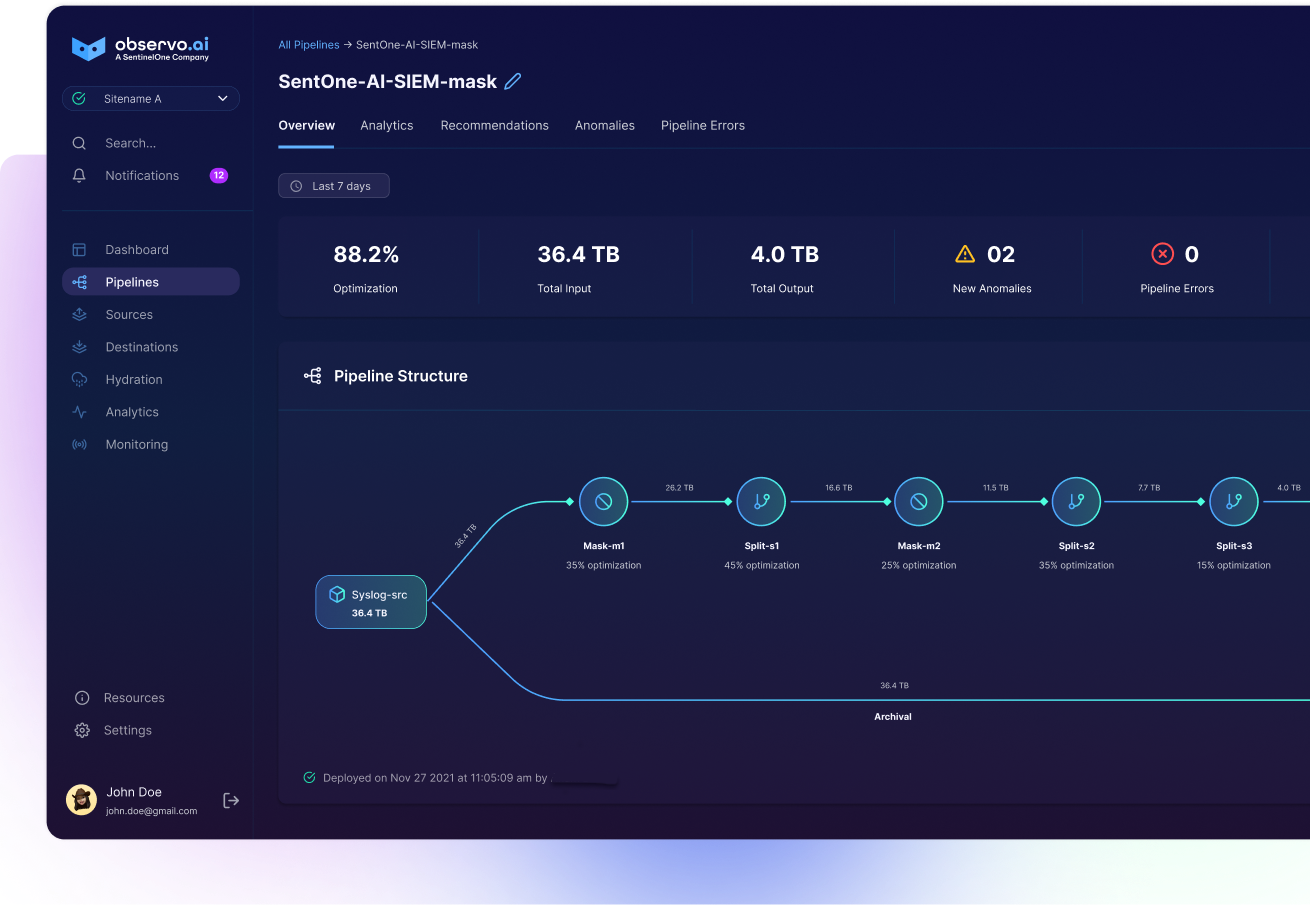Observability 101: What is Observability?

Introduction
Observability has emerged as a critical aspect of modern IT and software systems. It is a concept that plays a pivotal role in enhancing the reliability, performance, and security of complex applications and infrastructure. In this blog, we will delve into the depths of observability, exploring its definition, various concepts, major use cases, benefits, and how it empowers users and teams to improve operations. We will also discuss the role of observability in modern AI-powered Observability pipelines like Observo.ai, highlighting how AI is utilized to classify observability data and reduce costs in popular tools such as Splunk, Datadog, New Relic, and others.
Observability is a holistic approach to understanding the behavior of a system, application, or infrastructure by collecting and analyzing data from various sources, commonly referred to as telemetry. It involves capturing a wide range of data, including metrics, logs, traces, and security event logs, to gain insights into system behavior. Observability aims to answer the question: "What is happening in our system, and why?"
Key Concepts
- Telemetry: Telemetry refers to the data generated by systems, applications, and infrastructure components. It encompasses metrics (quantitative data), logs (qualitative data), and traces (information about the flow of requests through a system). Collecting telemetry data is essential for achieving observability.
- SIEM (Security Information and Event Management): SIEM systems are used to collect and analyze security event logs, providing insights into potential security threats and vulnerabilities. Integrating SIEM with observability tools enhances security monitoring and incident detection.
- Event Correlation: Event correlation involves identifying relationships between different events or anomalies in the system. It helps teams understand how various components affect each other and identify the root causes of issues.
- Data Lakes: Data lakes are large repositories that store raw, unstructured data. Observability data can be stored in data lakes for long-term analysis and historical tracking, allowing organizations to derive valuable insights over time.
Use Cases
Observability has diverse applications across various domains, including:
- Performance Monitoring: Observability helps identify performance bottlenecks, latency issues, and resource utilization patterns in applications and infrastructure, ensuring optimal user experiences.
- Troubleshooting and Root Cause Analysis: When issues arise, observability tools enable teams to quickly identify the root causes by analyzing metrics, logs, and traces. This leads to faster issue resolution.
- Security Monitoring: Integrating observability with SIEM systems strengthens security posture. Teams can detect and respond to security threats by analyzing security event logs and correlating them with system behavior data.
- Capacity Planning: Observability assists in predicting resource requirements, enabling organizations to plan infrastructure scaling and cost optimization more effectively, especially in cloud environments.
- Application and Infrastructure Health: Continuous monitoring of metrics and logs helps ensure the health and availability of applications and infrastructure components.
Benefits
Observability offers several advantages:
- Faster Issue Resolution: By providing real-time insights into system behavior, observability tools expedite issue identification and resolution, minimizing downtime and improving user satisfaction.
- Improved Performance: Performance bottlenecks can be proactively addressed, leading to enhanced application and infrastructure performance.
- Enhanced Security: Combining observability with security monitoring enhances threat detection and incident response capabilities, reducing the risk of security breaches.
- Cost Optimization: Capacity planning based on observability data can lead to significant cost savings, especially in cloud environments where resource provisioning can be adjusted dynamically.
Usage
Users and teams leverage observability in several ways to make operations better:
- Continuous Monitoring: Teams continuously collect and analyze telemetry data, using observability tools to gain real-time insights into system behavior.
- Alerting and Notifications: Observability tools generate alerts and notifications based on predefined thresholds and anomaly detection algorithms, allowing teams to respond to issues promptly.
- Dashboarding and Visualization: Customizable dashboards and visualizations help teams track key performance indicators and system health, making it easier to identify trends and anomalies.
- Incident Response: When incidents occur, observability tools provide the necessary data for root cause analysis and troubleshooting, facilitating faster incident resolution.
Observability Pipelines
Observo.ai is an example of a modern observability pipeline that leverages AI to classify observability data. AI algorithms can automatically identify and categorize telemetry data, reducing the manual effort required to tag and classify data. This automation streamlines the analysis process and makes observability tools more efficient and cost-effective.
Conclusion
Observability is a critical concept for modern IT and software systems. It enables organizations to gain deep insights into system behavior, leading to faster issue resolution, enhanced performance, improved security, and cost optimization. With the integration of AI-powered observability pipelines like Observo.ai, organizations can further streamline their observability efforts, making operations more efficient and effective. Embracing observability is essential in today's complex and dynamic IT landscape, ensuring the reliability and resilience of digital services.




